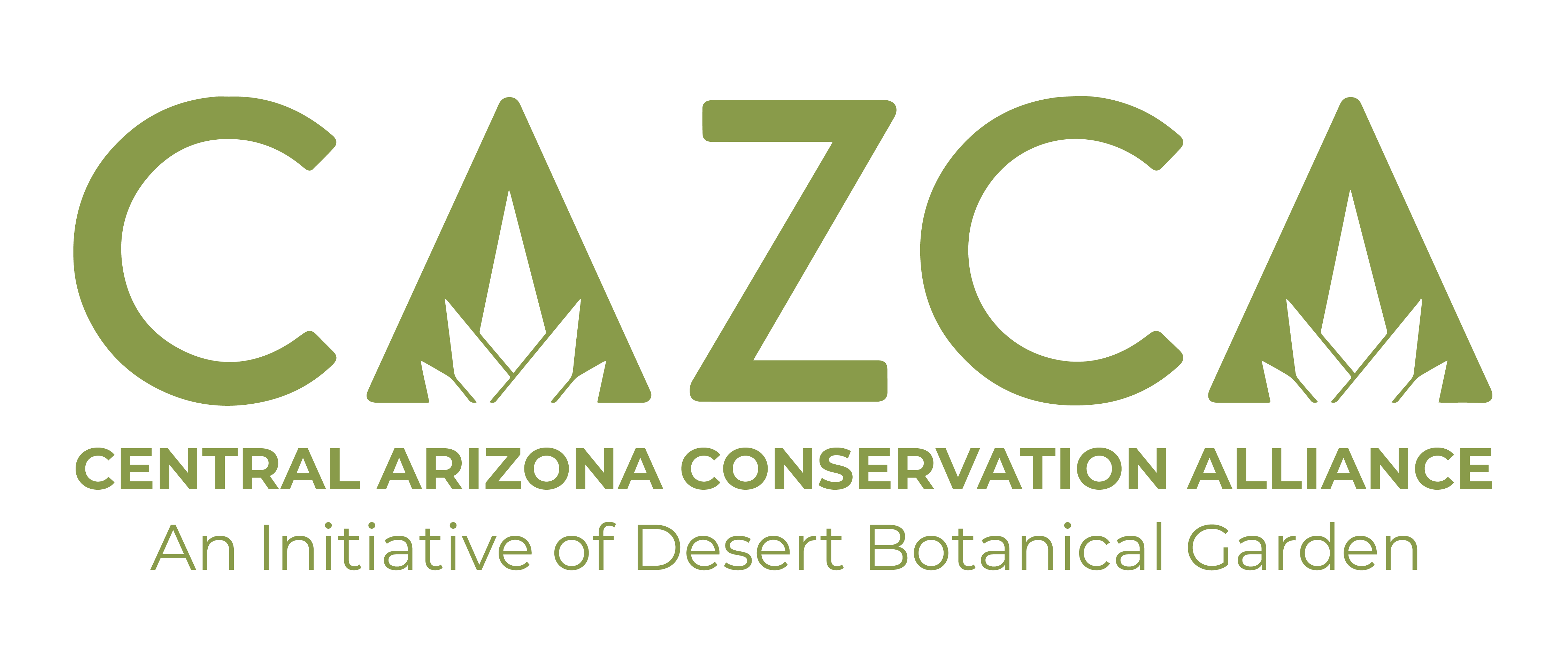Did you know that some plants can actually harm the surrounding environment that they occupy? The presence of invasive plant species in Arizona has led to an increase in fire danger and severity, a decrease in native plant species populations, a decrease in biodiversity, and other negative impacts.
I am currently a student at Northern Arizona University studying environmental sciences and have been working as an intern with The Central Arizona Conservation Alliance (CAZCA) to study Homeowners Associations (HOAs) to determine how public entities can contribute to invasive plant species management. The long-term goal of this project is to eliminate harmful invasive plant species in communities to lower fire danger and severity, and create a healthier environment in the Phoenix-Metro area. This is important because many of these invasive plant species contribute to the rapid spread of fires and they contributed to several fires in 2020 that led to evacuations in the Phoenix-metro area. Buffelgrass (Pennisetum ciliare, Cenchrus ciliaris) is a good example of this, as we have plenty of science showing its impacts on fire in Arizona.
Buffelgrass is native to Africa, Asia, and the Middle East. It, along with other invasive plant species in Arizona causes more damage than just increased fire hazard. Buffelgrass has a strong presence and usually ends up taking over the habitat of native plants. This phenomenon leads to a decrease in biodiversity. Buffelgrass also burns at an average temperature of over 1000 degrees Fahrenheit, and it is fire adapted which means it has traits that help the plant survive wildfires or thrive after a wildfire has occurred. In contrast to buffelgrass and how it reacts to fire is saguaros, which will not survive a fire in the long term if burned more than 30%. This is a large problem in Arizona because saguaros are an iconic, culturally-important native species. Overall, the species is a threat to the ecosystem, community, and economy as the effects can leave expensive consequences.
I have been working with the help of Dr. Aireona Raschke (the program director from CAZCA) to gather information from Homeowners Associations (HOAs) across the Phoenix-metro area in order to see what type (if any) of invasive plant species regulations are being enforced within their communities. For the most part, this information comes from HOAs CC&Rs (Covenants, Conditions, and Restrictions) which are usually available to the public. We’ve found that many HOAs do not have restrictions regarding invasive plant species or a prohibited plant list that includes invasive species.
Why is this Important?
I think that it is important for HOAs to use their position in communities to help benefit the environmental state of the area. Conducting the research and seeing some of the restrictions that do exist makes the long-term goal of eliminating invasive plant species seem attainable. Although extraction of these plants takes work, enforcing restrictions would bring about a gradual change that would benefit many aspects of community.
At this stage in the project, available information from several HOAs across the Phoenix-metro area has been collected and a small number of HOAs have been selected by myself and the other intern to begin outreach. We plan to interview members from each selected HOA to get a better idea of their policies and possibly, with some time, work with them to implement new policies that contribute to the well-being of the environment overall.
What I’ve Learned
Working on this project has taught me a lot about invasive plant species as well as what kind of work is available in my area of interest and study. I have learned how to effectively communicate with public entities, gather information, build and manage databases, and all about environmental problems we face in Arizona. My research skills have improved and I am constantly improving my adaptability as my team and I adjusted our research plans to be 100% digital during the COVID-19 pandemic. Transferring some of the skills and knowledge I have obtained through school into a real project that has the potential to bring on long-term change has been very encouraging. This is an ongoing project so future interns/NAU students will work to accomplish long-term goals.


